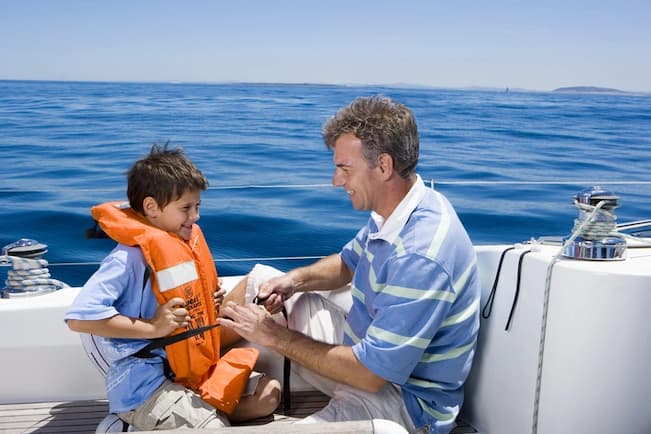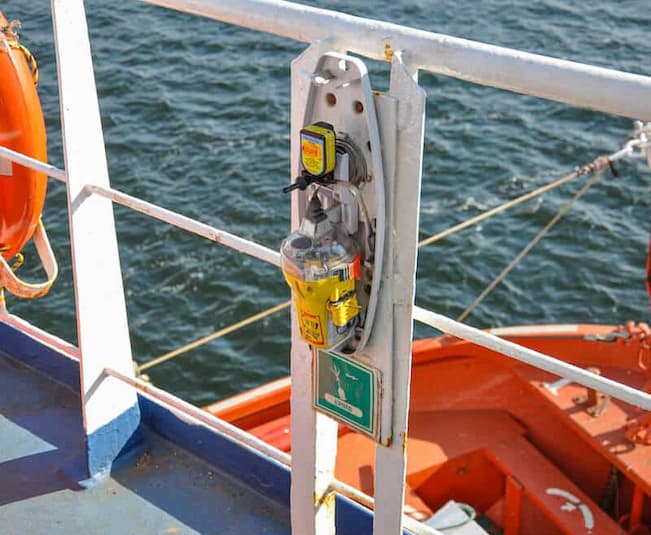From tough little tinnies that are perfect for scooting in and out of fishing inlets, to lazy luxury catamarans happily spending their days anchored to sandbars, Aussies love boating. But while time on the water with family and friends has all the makings of the perfect getaway, it doesn’t mean that caution also gets to be thrown to the wind.
Unlike the precautions you’d take anywhere else, watercraft safety requires being prepared for onboard and submersion level emergencies: either of which can lead to the other, with both occurring miles away from any type of assistance.
Being safe on the water doesn’t require complex preparations, but it does require thorough ones. And ultimately, it means that if you’re in charge of the boat, you’re also responsible for ensuring that it’s properly equipped to see your passengers through a range of potentially life-threatening situations.
Getting Equipped for Safe Boating
Let’s be honest: although accidents can happen on land or on the water, there’s no margin for a delayed response when they happen on the water. A fire, hull breach, or even accidental collision can instantly worsen from being an unfortunate accident into a catastrophic incident, which is why premium quality boat safety equipment is essential gear to have onboard personal watercraft at all times.
The reality with boating emergencies is that they never occur with advanced notice. That’s what makes being prepared so important, and that’s why States and Territories have been so proactive in enacting their own minimum mandatory safety equipment rules for the most basic gear in either enclosed or open waters. The guidelines are in place; however, it’s still up to boat owners to adhere to them and to ensure that they’re equipped with the best boat safety gear available every time they leave the dock.
Life Jackets for Everyone

Regardless of whether you’re fishing, kayaking, or day cruising, life jackets and wearable personal floatation devices (PFDs) are the first line of safety equipment on any boat. All AU states require that one Australian Standard (AS) 4758-compliant device be available for every person aboard. Ideally, they should be worn even when the boat is docked; and this is especially true for infants, children, and non-swimmers.
Block-style and foam-padded jackets typically come in 3 major Newton (N) levels: a Newton being the amount a person would weigh in water after their estimated water weight is subtracted from their real weight.
- 50N/50S (special use). These jackets are capable of providing 5kg of buoyancy for competent swimmers in enclosed or smooth water near land, as well as for watersports.
- 100N. These jackets are capable of providing 10kg of buoyancy for swimmers and non-swimmers in sheltered or calm waters, but won’t ensure a wearer remains to face up or protect them in rough water.
- 150N. These jackets are capable of providing 15kg of buoyancy for swimmers and non-swimmers in coastal and open waters, and will turn a conscious or unconscious wearer onto their back.
As an owner, you need to make sure that all passengers have their life jackets on before leaving the dock. And for whenever you plan to bring a dog aboard, there’s also a range of dog life jackets available for pets up to 34kg.
Necessary Fire-Extinguishing Equipment
No matter if it’s caused by an electrical problem, an engine problem, or some other problem, a fire on a boat can be disastrous. There’s no place to escape from it when you’re several miles out in open water, which means you have to have the necessary fire extinguishing equipment onboard to take action with.
ABE-type, dry powder fire extinguishers are your best weapon against the most likely fires on a boat, and are good against the following fire classes:
- Class A – Common structural combustibles such as wood, plastic, rubber, and marine insulating materials.
- Class B – Flammable and combustible liquids typically found on boats such as fuel, oil, and other solvents.
- Class E – Energized electrical equipment such as charging systems, appliances, and lighting.
These lightweight, rechargeable units are AS1841 compliant, and are typically sold for personal watercraft in capacities between 1kg and 9kg, allowing for discharge times between 12 and 20 seconds.
With fuel capacities that ordinarily vary between a couple hundred and a couple of thousand litres, States are very specific about the minimum number of fire extinguishers that watercraft of certain lengths need to carry. It can only be to a boat owner’s advantage however to always maintain one than the minimum number, and to ensure that passengers know where they’re located and are familiar with how to use them.
Essential Distress Signals

The decision to initiate a distress signal is the last option that any boat owner ever wants to take, but it’s a contingency that they have to be prepared for. It means having an AS/NZ4280.1 compliant Emergency Position-Indicating Radio Beacon (EPIRB) on board anytime you’re in open or only partially smooth waters, or more than 2 nautical miles offshore.
EPIRBs transmit a 406MHz distress code that’s unique to you and your boat, along with a 121.5MHz homing signal that allows your position to be GPS located or independently triangulated by satellite. And depending on the model, EPIRBs are designed to be activated by either manually removing the unit from its mounting bracket, or by hydrostatic free-float once it’s made contact with water.
As search and rescue (SAR) devices, EPIRBs are required to be registered with the Australian Maritime Safety Authority (AMSA), and a single device can be registered for up to 4 vessels. It gives you the flexibility to move a critical piece of equipment with you whenever you switch boats. Most importantly though, it highlights their ability to be used for SAR events involving any type of watercraft, with features that include:
- Zero warm-up activation;
- 48hr minimum operating time; and,
- A high-intensity, solid-state strobe light.
And for trips less than 2 nautical miles offshore, you also want to be sure you have the mandatory number and type of visual signalling devices onboard, including:
- Red and orange handheld distress flares;
- Parachute distress rockets; and,
- Floating smoke canisters.
Needless to say, if an emergency situation occurs, signalling is likely to be your most expedient means of alerting other boats or aircraft that you need assistance. Your signalling devices have to be reliable; but more importantly, everyone onboard needs to know how to use them.
Awareness Makes all the Difference
As a boat owner, you could buy all the boat safety equipment Australia has to offer, but it’ll all be for nothing in an emergency if you’re unavailable to put any of it to use, and your passengers are either unable to find the gear, or unfamiliar with how it all works.
Again, you’re responsible for the safety of everyone onboard, and that also means ensuring that:
- All of your safety equipment is serviceable and up to date;
- The equipment is both clearly identifiable and readily accessible; and,
- That every passenger has a fair understanding of how to operate the equipment.
Keeping your passenger’s safe means making sure that they know what to do in the event of an emergency, along with where to locate the boat’s safety equipment in case you’re unable to provide immediate assistance. And not only will their awareness of the kind of safety gear onboard makes a difference in an urgent situation, but it’s also going to remind them to stay vigilant to situations that could create an emergency.
The Final Word
At the end of the day, from the moment you hit the water, boat safety has to be taken seriously. And although the exact types and quantities of safety equipment you need are going to be determined by the type of boat you have and where you’re travelling, you can’t afford to use equipment that’s less than the best.
With proper preparation and premium-quality boat safety equipment, you can feel confident that every time you take your boat out, you’re ready for any emergency that might occur. Together, they make up a complement of boating equipment that you hope you’ll never need, but if you do, they won’t let you down.
























